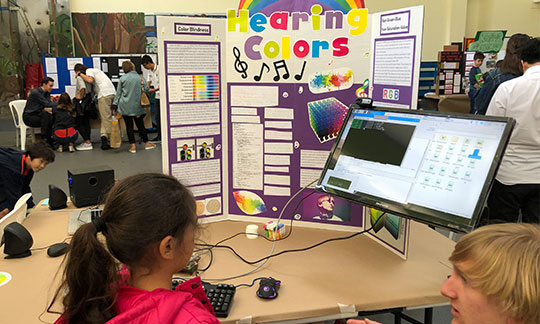Educating towards a sustainable future means facilitating learning that is connected to our global reality in a way that is engaging, thought-provoking and skill-building. Ultimately schools would be fostering global citizens that not only embrace the complexities, but also have the will and skills to create something better. A systemic approach is the key to both deeper learning and embracing complexity for better solutions to today’s most difficult issues. A systemic, connected approach will help prepare students for a future that is unknown and ever-changing. The traditional factory model of kindergarten to grade twelve (K-12) education is not serving the learning needs of a new generation of complexity thinkers and practitioners. What holds schools back and what systemic structures keep formal education from progressing and ultimately embracing the complexity of the world? There appears to be a will on the part of many K-12 educators to facilitate this kind of learning what is required is to find the way. The aim is to explore the connections between systems, sustainability and educational transformation. It is seeking a move towards more systemic models in schools for both improved student learning and improved planetary balance for the natural and human systems. Striving towards deeper understanding and action towards sustainability in K-12 schools, being systems literate to tackle complex issues, and having tools to move forward on these complex interrelated issues will help K-12 education contribute profoundly towards creating a sustainable, flourishing future for all.
K-12 educational institutions are under a tremendous amount of pressure to serve two masters. At a time when the standardized testing business is bringing in huge profits, schools are struggling, and students, teachers and parents are under tremendous strain, something has to give (Robinson & Aronica, 2015). Traditional approaches are called upon to ensure students gain opportunities for the next step in their learning journey in higher education, and new thinking and innovation are required to ensure students are prepared for a world that is ever changing and uncertain. Sustainability sits at the heart of this tension as some view it as an extra to what is absolutely essential, and others view it as essential to ensure a positive future and connected learning. These differing mindsets are important to understand when looking at sustainability in schools and the impact it has locally and globally. When looking at the challenges and opportunities for sustainability education I am filled with both great fear and great hope. It is very difficult to question the need for a change of this nature in our world, yet schools have not yet caught up to the change required to act upon it. We are wasting our brains and our only world on the design, production, and consumption of things we do not need and that are not serving us well. (Chouinard & Stanley, 2012). This is the creative tension that drives me forward to help create better learning and a better future for students everywhere through K-12 schools.
People have differing views and understanding of the meaning and importance of sustainability but it really is the only word that captures the grand goal for all related systems in and around earth. Schools are places where values, habits and thinking models are formed and nurtured, and therefore a key leverage point in creating a sustainable future for all. Almost 20 years ago, E. F. Schumacher (1997) wrote, “The volume of education continues to increase, yet so do pollution, exhaustion of resources, and the dangers of ecological catastrophe. If still more education is to save us, it would have to be education of a different kind: an education that takes us into the depth of things…” (p. 208). These same issues are still growing today, and without a vision of what’s possible through education we could be heading towards larger system collapse. David Orr (1994) shares that the destruction of the planet is not the work of ignorant people, but rather of those with many degrees and years of formal education. Where do sustainability and formal education meet? And where do they work against each other driving the human condition deeper into massive complex issues endangering the planet, our societies, our economic models and our wellbeing? Perhaps never before has the need for a different approach to K-12 education been more important or timely.
The deeper I dig into learning about systems the more I wonder why I never had the opportunity to do so much earlier in life. My own understanding of the connected nature of all things on earth has developed over time. Some of this learning emerged intuitively, but most has come from a deep dive in the last few years into systems and sustainability. No one was “teaching me” to learn this; I was passionate about creating a sustainable future through education and have come to learn that this would not be possible without a systemic approach. Systems learning can inform the setup of the formal education system and improve the learning that takes place within that system. It makes me regret not having been exposed to any deliberate systems literacy earlier in life. It is the drive to offer these learning opportunities for young people in education that I believe will bring about large-scale change towards some of the biggest and most complex issues facing humankind today.
This transformation from linear to systemic thinking will not only improve learning in schools but also create a more sustainable future. Senge (2014) shared that he believes schools are not meeting the mark when it comes to addressing and tackling the world’s most complex issues. The linear makeup of formal education creates walls rather than breaking them down for more connected learning and better solutions. He believes that no one wakes up in the morning and wants to effect climate change in a negative way, we simply lack the connected thinking and tools to understand and take meaningful action on a micro and macro level.
There is much conversation globally around the terminology that surrounds systems. Whether it is called systems dynamics, systems thinking, systems literacy or systems science there seems to be no uniform and globally understood approach. It is no wonder schools have difficulty with conflicting understandings and vocabularies for what fundamentally is a very similar understanding about the connected nature of all things, and thinking about the world in a different way. Many organizations and tools exist in support of kindergarten to Grade twelve schools (K-12) in achieving a more connected systemic approach, but many barriers also persist which is blocking progress. Bateson (1997) states that “our machines, our value systems, our educational systems will all have to be informed by (the) switch, from the machine age when we tried to design schools to be like factories” to something more appropriate for today’s reality. (p. 84)
Stroh (2015) advocates that becoming a deeply skilled systems thinker takes time but it is definitely possible for everyone. “We’ve learned that, on one level, systems thinking is child’s play: We were born with the capacity to see connections and understand (though not necessarily tolerate) time delay” (p. 205).
Applying systems tools and practices shapes us as people and alters how we view the world. Fostering millions of these kinds of thinkers and practitioners can help shape the sustainable world we so desire (Cabrera & Cabrera, 2015).
Like systems literacy, sustainability has an equally tumultuous past and a multitude of levels of understanding and application. Sterling (2008) writes that
Unfortunately, the term ‘sustainable education’, with a few welcome exceptions, has often been bundled in by writers as synonymous with ‘sustainability education’, ‘education for sustainability’ and ‘ESD’. These terms represent worthy developments but do not necessarily connote the need for deep change in educational values, assumptions and practices. (p. 88)
These are of course intrinsically linked and interconnected. This transformative paradigm shift in K-12 education is both necessary and possible, not just for better learning, but also for the future of our planet. It is time to enact upon the knowledge, skills and understanding we humans already possess to create the schools and the future we so desire.
References
Aalto University. (2014, December 15). Peter Senge: “Systems Thinking for a Better World” – Aalto Systems Forum 2014 [Video file]. Retrieved from https://youtu.be/0QtQqZ6Q5-o
Bateson, M. C. (1997). Understanding natural systems. In C. Zelov & P. Cousineau (Eds.), Design outlaws on the ecological frontier. United States: Knossus.
Cabrera, D., & Cabrera, L. (2015). Systems thinking made simple: New hope for solving wicked problems. Ithica, NY: Odyssean.
Chouinard, Y., & Stanley, V. (2012). The responsible company. Ventura, CA: Patagonia Books.
Orr, D. W. (1994). Earth in mind: On education, environment, and the human prospect. Washington, DC: Island Press.
Robinson, K., & Aronica, L. (2015). Creative schools: The grassroots revolution that’s transforming education. New York: Viking.
Schumaker, E. F. (1997). This I believe and other essays. Dartington, UK: Green Books.
Sterling, S. (2008, Spring). Sustainable education – towards a deep learning response to unsustainability. Policy & Practice – A Development Education Review, 6, 63-68.
Stroh, D. P. (2015). Systems thinking for social change: A practical guide to solving complex problems, avoiding unintended consequences, and achieving lasting results. White River Junction, VT: Chelsea Green.


